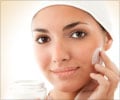Two independent sets of nerve receptors in the skin pick up vibrations and relay them to the brain.

"Coarse textures are reflected in the spatial pattern of responses by one set of receptors, but that's only a small part of the story," said the study's senior author, Sliman Bensmaia, PhD, assistant professor in the Department of Organismal Biology and Anatomy at the University of Chicago. "Most of what we consider to be natural textures are represented in temporal patterns of activation in the other two groups of receptors."
The majority of studies investigating the neural basis of texture perception have used coarse materials, such as gratings and Braille patterns, which activate a set of receptors in the skin called slowly adapting type 1 (SA1) afferents.
In the experiments performed in this study, Bensmaia and his colleagues used a drum covered with strips of such coarse textures, along with several materials with finer textures, such as sandpaper, fabrics and plastics. The drum then ran the textures across the fingertips of Rhesus macaques, whose somatosensory system is similar to humans, while the researchers recorded the neuronal responses.
While the coarse textures produced the familiar SA1 response, the SA1 afferents did not fire at all for the majority of the finer textures. Instead, two sets of afferents that have not been implicated previously in texture sensation, rapidly adapting (RA) and Pacinian (PC) fibers, responded in a temporal pattern that followed the vibrations produced in the skin by scanning the surface.
"If you relied on SA1 afferents alone for texture perception, you would not be able to discriminate most textures. You couldn't tell silk from satin, or denim from felt and corduroy," Bensmaia said.
Advertisement
In addition to ascribing to these receptors a new role in touch, the study highlights that touch employs two modes of operation: One based on spatial patterns of activation, the other on temporal patterns. These two modes coexist and interact.
Advertisement
"What we've shown here is that all three sets of afferents contribute to texture perception," Bensmaia said. "In fact, signals from all three populations are integrated to culminate in any kind of tactile perception."
Source-Eurekalert















